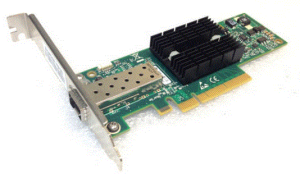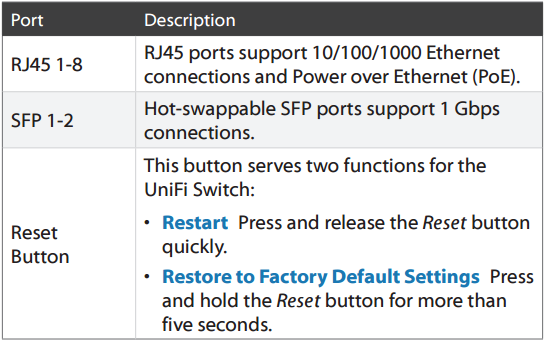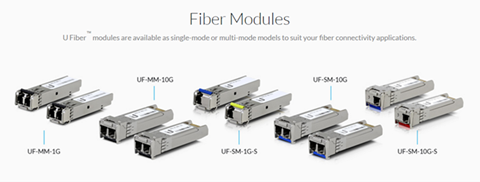How to choose fiber optic cables for 10G SFP+ transceivers? It seems like a dumb question for most of the fiber optic technicians. However, there are still some people, especially the green-hand network installers, may not know the compatibility between fiber optic cables and optical transceiver modules. Today, I want to make a clear illustration of how to choose the right transmission media (OS2/OM3/OM4/Cat6/Cat6a) for 10G SFP+ optical transceiver modules.
Overview of SFP+ Optical Transceiver Module
Before coming to the main part of this article, let’s first have a brief overview of the SFP+ optical transceiver modules and 10G fiber & copper cables.
- 10GBASE SFP+ optical transceivers
SFP+ optical transceivers, according to the IEEE standards, can be divided into several types, for example, 10GBASE-LRM SFP+, 10GBASE-LR, 10GBASE-ER SFP+, 10GBASE-ZR SFP+, 10GBASE-SR SFP+, 10GBASE-T SFP+. Each SFP+ optical transceiver type has its own specification and usage that are not be listed here. For more, please review the previous articles.
- BiDi SFP+ Modules
Besides the above 10GBASE SFP+ modules, 10GBASE-CWDM SFP+, 10GBASE-DWDM SFP+ and SFP+ BiDi optical transceiver modules are also the most commonly used 10G SFP+ optics. SFP+ BiDi optical transceiver usually uses two different wavelength to achieve 10G transmission over one fiber. The most frequently used wavelength of BiDi optical module is 1310nm/1550nm, 1310nm/1490nm, 1510nm/1590nm.
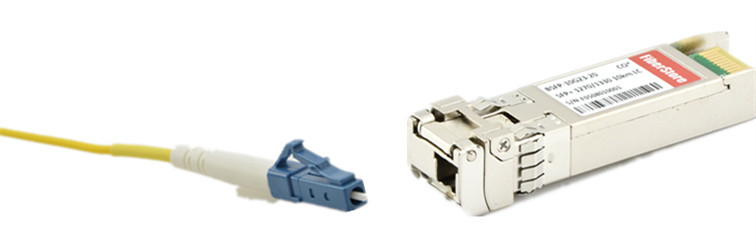
- CWDM/DWDM SFP+ Modules
The Coarse Wavelength-Division Multiplexing (CWDM) and Dense Wavelength-Division Multiplexing (DWDM) SFP+ optics are the convenient and cost-effective solution for the adoption of 10 Gigabit Ethernet in campus, data-center, and metropolitan-area access networks. This 10G fiber optic transceiver type can support up to eight channels of 10GbE over single-mode fibers for distance over 80km.
10G Fiber & Copper Patch Cables
Fiber optic cables can be categorized into two types: single-mode and multimode fiber optic cables. They have different core size and fiber optic transmission equipment, which makes them suitable in different applications. Single-mode fiber patch cables, or OS1/OS2 (OS1 is now not popular on the market) are normally used for long-distance transmission with laser diode based equipment.
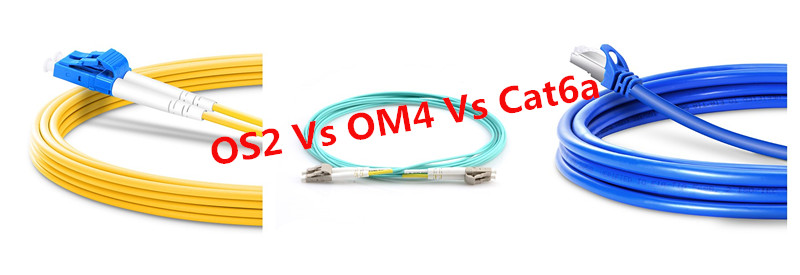
Multimode fiber cables, or OM1/OM2/OM3/OM4, have a relatively large light carrying core, usually utilized for short-distance transmission with LED based equipment. OM1, with a core size of 62.5um, supports 1GB network within 300m. OM2 (50um) can support up to 10GB, with a distance of 600m. OM3 and OM4 are the laser-optimized multimode fibers, which can be used in 10GB network with a link length of 300m, 550m respectively. These types of optical cables can be also used on 40G/100G network utilizing a MTP/MPO connector.
Cat6/Cat6a cables are the Copper Ethernet Network cables used for 10G network. Compared with Cat5e (1 Gigabits of data) and Cat5 cables (10/100 Mbps), Cat6 is the Ethernet cable that can handle up to 10Gbps with the distance limited to 164ft. Cat6a is the advanced version of Cat6 cables that further reduce crosstalk, which makes it can support the full 328 feet of Ethernet cable.
Choosing Fiber Optic Cables for 10G SFP+ Optical Transceivers
As noted before, single-mode patch cables can be used for 10G 10GBASE-LRM SFP+, 10GBASE-LR SFP+, 10GBASE-ER SFP+, 10GBASE-ZR SFP+, 10GBASE-CWDM SFP+, 10GBASE-DWDM SFP+ and SFP+ BiDi modules.
| Cable Type | Connector | Max Distance | |
| 10GBASE-LRM SFP+ | 9/125 SMF | LC Duplex | 200m |
| 10GBASE-LR SFP+ | 9/125 SMF | LC Duplex | 10km |
| 10GBASE-ER SFP+ | 9/125 SMF | LC Duplex | 40km |
| 10GBASE-ZR SFP+ | 9/125 SMF | LC Duplex | 80km |
| CWDM SFP+ | 9/125 SMF | LC Duplex | 80km |
| DWDM SFP+ | 9/125 SMF | LC Duplex | 80km |
| SFP+ BiDi | 9/125 SMF | LC/SC Simplex | 80km |
Multimode fibers, especially the OM3 and OM4 cables, are supported for 10GBASE-SR SFP+ transceiver modules. The following chart displays the part No. of customized OM3 and OM4 cables.
| Customized Part ID | Connector | Fiber Mode | Polish Types | Jacket | Stock Length |
| 17235 | LC Duplex | 50/125 OM4 | UPC | PVC | 1m-30m (3ft-98ft) |
| 17235 | LC Duplex | 50/125 OM4 | UPC | LSZH | 1m-15m (3ft-49ft) |
| 17235 | LC Duplex | 50/125 OM4 | UPC | OFNP | 1m-15m (3ft-49ft) |
| 12018 | LC Duplex | 50/125 OM3 | UPC | PVC | 1m-30m (3ft-98ft) |
| 12018 | LC Duplex | 50/125 OM3 | UPC | LZSH | 1m-30m (3ft-98ft) |
| 12018 | LC Duplex | 50/125 OM3 | UPC | OFNP | 1m-15m (3ft-49ft) |
Cat6 and Cat6a Patch cables can be only used on the 10GBASE-T SFP+ transceivers.
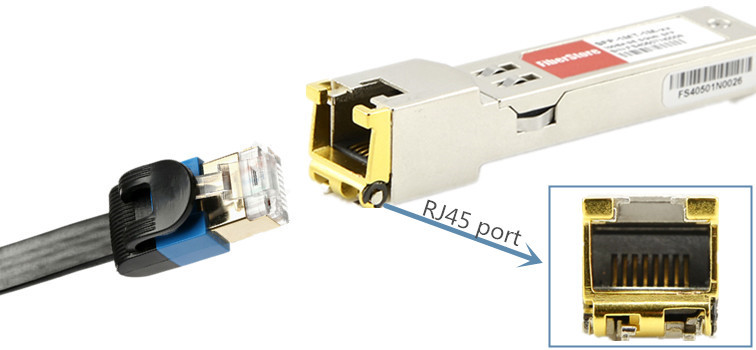
Keep in mind, the newly available SFP+ copper transceiver modules can only support up to 30m.
Conclusion
This article lists all the existing the 10G fiber & copper patch cables and SFP+ transceiver module types, as well as the guidance about how to select the right patch cables for 10G SFP+ optical transceivers. FS.COM offers a full range of SFP+ optical transceiver modules and patch cables. Please contact us if you need any help.

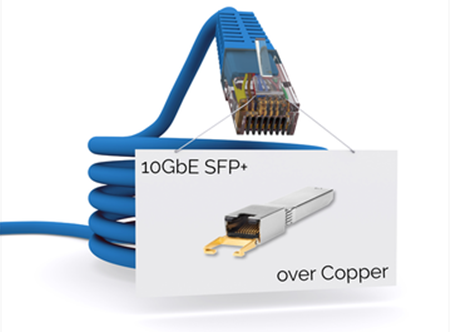
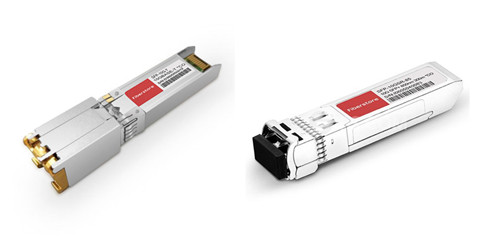
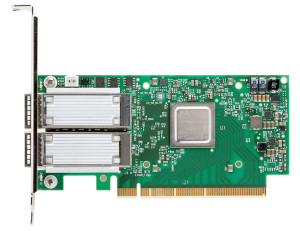
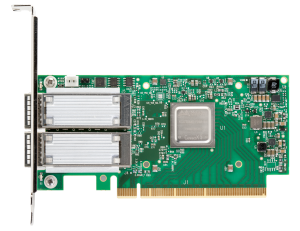
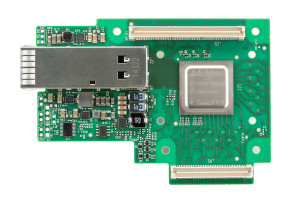 ConnectX-4 adapter cards have three different types: ConnectX-4 Lx EN Programmable Adapter Card, ConnectX-4 EN, ConnectX-4 Lx EN. ConnectX-4 Lx EN Programmable Adapter Card is listed in the right image. ConnectX-4 EN network is the single or dual port 100 Gigabit Ethernet adapter cards. ConnectX-4 Lx enables data centers to migrate from 10G to 25G and from 40G to 50G speeds at similar power consumption, cost, and infrastructure needs. If you are into this NIC card, you'd better look through their difference.
ConnectX-4 adapter cards have three different types: ConnectX-4 Lx EN Programmable Adapter Card, ConnectX-4 EN, ConnectX-4 Lx EN. ConnectX-4 Lx EN Programmable Adapter Card is listed in the right image. ConnectX-4 EN network is the single or dual port 100 Gigabit Ethernet adapter cards. ConnectX-4 Lx enables data centers to migrate from 10G to 25G and from 40G to 50G speeds at similar power consumption, cost, and infrastructure needs. If you are into this NIC card, you'd better look through their difference.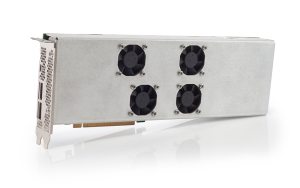 y with hardware offload engines. The long-term goal at Mellanox ConnectX Gigabit Ethernet adapter card is to allow customers to wire once and switch protocols on the server and switch as required by workloads. Mellanox can presumably charge a premium for such capability, and ConnectX-3 silicon allows Mellanox to create fixed adapters and switches at specific speeds to target specific customer needs and lower price points, too. The image on the right display the ConnectX-3 Pro Programmable Adapter Cards.
y with hardware offload engines. The long-term goal at Mellanox ConnectX Gigabit Ethernet adapter card is to allow customers to wire once and switch protocols on the server and switch as required by workloads. Mellanox can presumably charge a premium for such capability, and ConnectX-3 silicon allows Mellanox to create fixed adapters and switches at specific speeds to target specific customer needs and lower price points, too. The image on the right display the ConnectX-3 Pro Programmable Adapter Cards.